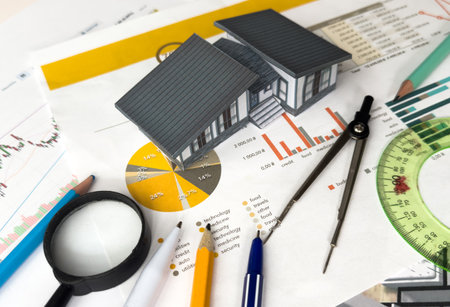1. Understanding Feng Shui: Principles and Relevance Today
Feng Shui, an ancient Chinese practice, focuses on harmonizing people with their surrounding environment. In the context of luxury homes in the U.S., Feng Shui is gaining popularity not just for its spiritual roots, but also for its practical approach to creating beautiful, balanced spaces that feel both inviting and energizing.
What Is Feng Shui?
At its core, Feng Shui is about the flow of energy—known as “chi”—through a space. It uses principles of placement, orientation, and design to maximize positive energy and minimize negative influences. While rooted in Eastern philosophy, these ideas translate well to modern Western living, especially when paired with high-end architecture and interior design.
Key Principles of Feng Shui
| Principle | Description | Modern Luxury Home Application |
|---|---|---|
| Chi (Energy Flow) | Ensuring smooth movement of energy throughout the home | Open floor plans, clear pathways, uncluttered spaces |
| Yin & Yang | Balancing contrasting elements (soft/hard, light/dark) | Mixing plush fabrics with sleek surfaces; combining natural light with cozy corners |
| The Five Elements | Incorporating wood, fire, earth, metal, and water | Natural materials like stone countertops, wooden floors, water features, metallic accents |
| The Bagua Map | A tool for mapping different life areas onto your homes layout | Zoning spaces for health, wealth, relationships using thoughtful decor or color schemes |
Why Feng Shui Matters in Today’s Luxury Homes
Luxury living today isn’t just about expensive materials or designer labels—it’s about well-being, comfort, and a sense of sanctuary. Feng Shui brings intentionality to design decisions. For example:
- Wellness-Focused Spaces: Using Feng Shui can create calming bedrooms or energizing kitchens that support your lifestyle goals.
- Personalized Design: Integrating the Bagua map helps tailor each room for specific intentions—like a serene home office for productivity or an inviting living room for social gatherings.
- Sustainable Choices: The emphasis on natural elements aligns perfectly with eco-friendly building trends seen in upscale American neighborhoods.
The Timeless Appeal of Feng Shui in Modern Homes
The beauty of Feng Shui lies in its adaptability. Whether you’re designing a minimalist penthouse overlooking Central Park or renovating a sprawling estate in Beverly Hills, these ancient principles provide a blueprint for spaces that look stunning and feel just right. By blending Eastern wisdom with contemporary aesthetics, luxury homeowners can enjoy environments that nurture both body and mind.
2. Bridging East and West: Harmonizing Traditions with Contemporary Style
Luxury homes in America often showcase innovative architecture, open floor plans, and high-end finishes. But how can you blend the ancient wisdom of Feng Shui with these modern trends? The secret lies in finding harmony between the principles of energy flow and today’s design preferences. Let’s explore practical ways to create a living space that feels both balanced and beautifully American.
Understanding Core Feng Shui Elements
Feng Shui is all about arranging your environment to promote positive energy, or “chi.” Here are some core elements to consider:
| Feng Shui Principle | Modern Application |
|---|---|
| Main Entrance Placement | Use grand entryways with clear sightlines to invite good energy, pairing classic double doors with contemporary glass panels. |
| Balance of Elements (Wood, Fire, Earth, Metal, Water) | Incorporate natural stone countertops, hardwood floors, metal fixtures, water features, and accent lighting for a balanced look. |
| Open Space Flow | Create seamless transitions between rooms using open layouts while keeping some cozy corners for rest and privacy. |
| Natural Light | Maximize sunlight with large windows and skylights—an American favorite—mirroring Feng Shui’s love for brightness. |
Integrating Feng Shui with Upscale American Design Trends
Color Choices
Choose color palettes that reflect both Feng Shui guidance and popular American styles. For example, soft neutrals like beige or gray offer calmness (Earth element), while navy blues or forest greens add a modern touch (Water or Wood elements).
Furniture Placement
Avoid placing sofas or beds directly in line with doors. Instead, position them so you have a clear view of the entrance but still maintain comfort—a tip that works well in spacious living rooms and master suites found in luxury homes.
Bringing Nature Indoors
Add indoor plants or water features to enhance vitality. In the U.S., statement planters or custom-built fountains can double as art pieces and energy enhancers.
The Power of Minimalism
American luxury homes often favor a less-is-more approach. This aligns well with Feng Shui’s principle of decluttering to allow chi to move freely. Opt for clean lines and minimal accessories—each piece should be intentional.
Sample Integration Table: Feng Shui Meets Modern Luxury
| Luxe Design Feature | Feng Shui Enhancement | Cultural Harmony Tip |
|---|---|---|
| Floor-to-ceiling windows | Place mirrors strategically to expand light and views without facing the bed directly. | Add sheer curtains for privacy while maintaining flow. |
| Sleek kitchen islands | Keep counters clutter-free; use fresh fruit bowls for abundance symbolism. | Select quartz or marble surfaces for both elegance and Earth element grounding. |
| Spa-like bathrooms | Add bamboo or live greenery to balance moisture (Water) with growth (Wood). | Avoid sharp edges on fixtures for softer energy movement. |
The key is to embrace what you love about modern American luxury—spaciousness, light, and quality materials—while layering in the mindful placement, color choices, and elemental balance that make Feng Shui so powerful. With small tweaks, your home can offer both style and serenity.

3. Designing Spaces for Prosperity and Well-being
Creating Room Layouts that Invite Abundance
In luxury homes, every room should feel both inviting and purposeful. According to Feng Shui, the flow of energy—or “chi”—is key to prosperity and well-being. When planning your layout, keep pathways clear and allow natural movement between rooms. Avoid placing large furniture in the direct line of entryways, as this can block positive energy. Open floor plans are popular in American homes and work well with Feng Shui principles by encouraging light and air circulation. Use area rugs to define spaces without creating barriers.
Furnishings that Balance Comfort and Harmony
Choose furnishings that offer both comfort and a sense of balance. In Feng Shui, rounded edges on tables and chairs help soften the energy in a space, reducing tension and promoting relaxation. For a modern American touch, opt for high-quality fabrics in neutral or earth tones, which ground the space while still feeling luxurious. Position seating so it faces the door but is not directly in line with it—this offers a sense of security while maintaining openness.
| Room | Key Feng Shui Principle | Modern Design Tip |
|---|---|---|
| Living Room | Create a conversation circle; avoid backs to doors | Arrange sofas/chairs around a central coffee table; use statement lighting |
| Bedroom | Place bed against a solid wall; avoid mirrors facing the bed | Add plush headboards; use blackout curtains for restful sleep |
| Home Office | Desk should face the entry; keep clutter hidden | Use built-in storage; ergonomic chairs blend style and support |
| Kitchen | Avoid stove directly across from sink/fridge; keep counters tidy | Install under-cabinet lighting; choose stone or quartz surfaces for durability |
The Power of Lighting for Health and Tranquility
Good lighting is essential in both Feng Shui and contemporary design. Maximize natural light by using sheer window treatments and placing mirrors strategically to reflect sunlight throughout the home. For evenings, layer different types of lighting—overhead fixtures, table lamps, and accent lights—to create warmth and dimension. Smart lighting systems allow you to adjust brightness according to mood or activity, supporting overall well-being.
Lighting Recommendations by Space:
- Entryway: Bright, welcoming lights set the tone for abundance.
- Living Areas: Dimmer switches provide flexibility for gatherings or quiet evenings.
- Bedrooms: Soft bedside lamps encourage relaxation and restful sleep.
- Kitchens: Task lighting ensures safety while cooking and adds vibrancy.
By blending Feng Shui guidelines with modern American design trends, you can create luxurious home spaces that nurture prosperity, tranquility, and health for everyone who enters.
4. Case Studies: Feng Shui Applied to Luxury American Homes
Real-Life Examples of Feng Shui in High-End Residences
Across the United States, more luxury homeowners and designers are integrating Feng Shui principles into both interior and exterior design. These case studies showcase how Eastern wisdom can be seamlessly woven into modern, upscale living environments, resulting in not only beautiful homes but also spaces that promote well-being, prosperity, and harmony.
Beverly Hills Mansion: Harmony and Wealth Flow
A renowned mansion in Beverly Hills underwent a major renovation guided by a certified Feng Shui consultant. The focus was on optimizing the flow of energy (Qi) throughout the home. Key changes included repositioning the front door to face an auspicious direction, adding a water feature at the entrance to attract wealth, and using a calming color palette for the main living areas. Post-renovation, the homeowners reported increased business success and a noticeable improvement in family relationships.
| Feng Shui Element | Implementation | Measured Benefit |
|---|---|---|
| Main Entry Orientation | Repositioned door to face East | Improved career opportunities |
| Water Feature | Installed reflecting pool at entry | Increased financial gains |
| Color Palette | Used earth tones in living room | Smoother family interactions |
New York City Penthouse: Balancing Modern Luxury with Energy Flow
This penthouse in Manhattan’s Upper East Side showcases how contemporary design and Feng Shui can work hand-in-hand. The space features open layouts, large windows facing Central Park (inviting positive energy), rounded furniture for gentle Qi movement, and carefully placed mirrors to reflect natural light. The residents experienced better sleep quality and higher productivity after implementing these changes.
| Design Feature | Feng Shui Application | Resulting Impact |
|---|---|---|
| Open Layouts & Large Windows | Maximized natural light and view of greenery | Mood elevation and stress reduction |
| Rounded Furniture | Softer energy circulation throughout space | Calmer atmosphere for relaxation |
| Strategic Mirror Placement | Bounced light deeper into rooms, expanded sense of space | Boosted creativity and focus for remote work |
Palm Beach Estate: Outdoor Feng Shui for Ultimate Tranquility
A waterfront estate in Palm Beach demonstrates how outdoor spaces can benefit from Feng Shui as well. The landscape design incorporated winding paths (to slow down energy), lush plantings for protection, and a koi pond representing abundance. Residents noticed more frequent social gatherings outdoors and an overall sense of calmness around the property.
| Outdoor Feature | Feng Shui Purpose | Tangible Outcome |
|---|---|---|
| Winding Pathways | Smooth energy flow through gardens | More inviting atmosphere for guests |
| Koi Pond Installation | Symbolizes wealth and prosperity | Sustained financial stability reported by owners |
| Lush Greenery Borders | Create privacy and protect against negative energy | Sensed greater peace and security at home |
5. Tips and Resources for Homeowners and Designers
Easy-to-Follow Feng Shui Tips for Luxury Homes
Bringing Feng Shui into your luxury home doesnt have to be complicated. Here are some straightforward tips that fit modern American lifestyles while honoring Eastern traditions:
- Entryway Energy: Keep the front entrance clean and welcoming. Add a stylish doormat, fresh flowers, or subtle lighting to invite positive energy (chi) inside.
- Balance Elements: Integrate the five elements—wood, fire, earth, metal, and water—using furniture, art, or accent pieces. For example, a glass water feature or wooden sculpture can be both elegant and harmonious.
- Declutter Spaces: Luxury often means spaciousness. Avoid overcrowding rooms with too much furniture or décor. Clear surfaces and open pathways help energy flow smoothly.
- Mindful Color Choices: Choose colors that support your goals for each room. Soft blues and greens for relaxation in bedrooms; bold reds or golds for prosperity in dining areas.
- Bedroom Placement: Position beds so you can see the door without being directly in line with it (“command position”). Use high-quality linens for comfort and calm.
- Natural Light & Air: Maximize daylight with sheer curtains and keep windows clean. Indoor plants add life and improve air quality—just avoid spiky varieties like cacti in main living spaces.
Recommended Tools and Décor Items
| Tool/Item | Description | Where to Find |
|---|---|---|
| Lucky Bamboo Plant | Symbolizes growth and flexibility; perfect for entryways or offices | Home Depot, Amazon, Local nurseries |
| Aromatherapy Diffuser | Cleanses air and uplifts mood with essential oils like lavender or citrus | Bed Bath & Beyond, Target, Amazon |
| Selenite Crystal Lamp | Cleansing energy source that adds elegance to living rooms or bedrooms | Etsy, Wayfair, Crystal shops |
| Water Fountain Feature | Brings calmness and wealth energy when placed near entrance (not in bedroom) | Lowe’s, Wayfair, Pottery Barn |
| Baguá Map Template | A tool for mapping out Feng Shui zones in your home layout | Free printable online (IFSG.org), Feng Shui books |
| Feng Shui Compass (Luo Pan) | Helps identify optimal directions for rooms and furniture placement | Amazon, eBay, Feng Shui specialty stores |
Trustworthy Sources for Learning More About Feng Shui
- International Feng Shui Guild (IFSG): A leading organization offering resources, certified consultants, and practical guides tailored for North American homes.
- Lillian Too’s Official Website: World-renowned Feng Shui expert with easy-to-read advice and luxury design inspiration.
- Architectural Digest – Feng Shui Section: Features articles on integrating Eastern philosophies into high-end interiors from top designers.
- About.com – Feng Shui Section (The Spruce): User-friendly explanations of basic principles and how-tos suitable for beginners.
If You’re Hiring Help:
If you’d rather work with a professional, search for local certified Feng Shui consultants who understand both traditional principles and modern American design trends. Check reviews on platforms like Houzz or Angi to find trusted experts experienced with luxury properties.
Your Next Steps:
No matter your experience level, experimenting with even one or two of these tips can create a more balanced and inviting home environment. Start small—with a plant or color change—and notice how your space feels!


